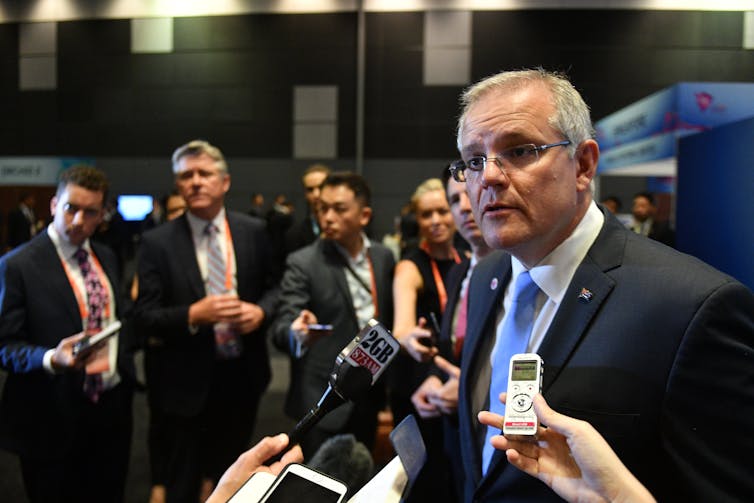Source: The Conversation (Au and NZ) – By Caroline Fisher, Co-author of the Digital News Report: Australia, Deputy Director of the News and Media Research Centre, and Associate Professor of Journalism, University of Canberra

Shutterstock
The News Media and Digital Platforms Mandatory Bargaining Code was enacted early this year in response to a call by the Australian Competition and Consumer Commission (ACCC) for strong action by the government to reduce the power imbalance between Australian news media businesses and digital platforms.
It was a fraught negotiation process, described as a three-way tug-of-war between the government, the digital platforms and the news media. The code has been strongly criticised by organisations – including The Conversation and SBS – that have missed out on deals even though they fall within its definition of news.
Another concern is for smaller and regional players that do not meet the $150,000 threshold for a news business to qualify under the code.
In early 2022, the Department of the Treasury will start its review of the News Media and Digital Platforms Mandatory Bargaining Code legislation to see if it remains fit for purpose by ensuring digital platforms contribute to the sustainability of the Australian news industry.
How will they do that, given the code is yet to be put to the test?
To date, no digital platforms have been designated by the treasurer under the code. If the treasurer is satisfied Google and Facebook have adequately contributed to the Australian news industry, they may never be.
A range of commercial content agreements between Facebook and/or Google and news businesses have been concluded outside of the legislation. This allows their content to be provided on Google News Showcase and Facebook News Tab. No comprehensive list is available, but company announcements and media coverage reveal deals have been done with The Guardian Australia, Junkee, News Corp Australia, Schwartz Media, The New Daily, ABC, Australian Community Media, The Conversation, Country Press Australia, Ten, Seven West Media, Nine Entertainment Co., Times News Group, Crikey, and Solstice media, and others.

Mick Tsikas/AAP
These deals are commercial-in-confidence, so very little is known about how much they are worth, how the money will be spent and how effective they will be in supporting news businesses.
On the one hand, several news organisations that struck deals with Facebook and/or Google have made announcements about hiring more journalists.
On the other hand, companies have announced reductions in print services and job cuts, despite striking deals with the platforms. Because of the lack of transparency, it is not clear how the commercial deals struck have influenced these business decisions. It is even harder to predict the longer-term impact of these content agreements on the sustainability of the news industry and whether they will contribute to a diverse Australian news ecology.
Reviewing the code will be a major task. To explore possible options, the News and Media Research Centre (N&MRC) at the University of Canberra held a Chatham House rules roundtable discussion with representatives of the news industry, platforms, government and the community.
The aim was to identify gaps in research to help inform media policy into the future. The bargaining code was one of the key topics discussed on the day. Based on our interpretation of those discussions and our research expertise, we have come up with a list of indicators to monitor the impact of the commercial content agreements on the sustainability of news businesses and the health of the wider news environment.
Different indicators are needed to reflect the distinct accountabilities of the three key actors involved: digital platforms, news businesses and government. Some of the suggested indicators below are observable and can be measured externally. Others will require collaboration with independent researchers.
Indicators to estimate the impact of the voluntary content agreements on the news industry could include:
-
changes in the number of journalists and other staff
-
closures, contractions or expansions of news outlets
-
the size of investment in cadets and staff training.
Other important measures would be to track the volume of public interest journalism content, as well as readership, subscription and membership figures. In the longer term, enrolments in journalism courses and their graduate employment outcomes will also provide useful indicators of the health of the industry.
Read more:
Why Google is now funnelling millions into media outlets, as Facebook pulls news for Australia
The assessment of the government’s performance may include independent evaluation of current and former government support programs for the news media industry, and if other countries adopt the code. For Google and Facebook, they will need to satisfy the treasurer that the power imbalance has been corrected and enough has been done to help sustain the Australian news media.
It must be stressed that the news media bargaining code was never designed to be a silver bullet to fix the ailing news industry. It was part of a wider suite of supports for the news media that the ACCC recommended.
These suggested indicators are by no means exhaustive, but they paint a picture of the complexity of the task at hand. It will require co-operation and collaboration between government, industry and academia. After all, it is journalism in the public’s interest that is at stake here.
A copy of the N&MRC’s research priority report can be found here.
![]()
Caroline Fisher receives funding from the Australian Research Council, Social Science Research Council, and the Alannah and Madeline Foundation.
Kerry McCallum receives from the Australian Research Council and the Office of the e-Safety Commissioner
Sora Park receives funding from the Australian Research Council, Social Science Research Council, and the Alannah Madeline Foundation.
– ref. Is the news media bargaining code fit for purpose? – https://theconversation.com/is-the-news-media-bargaining-code-fit-for-purpose-172224








